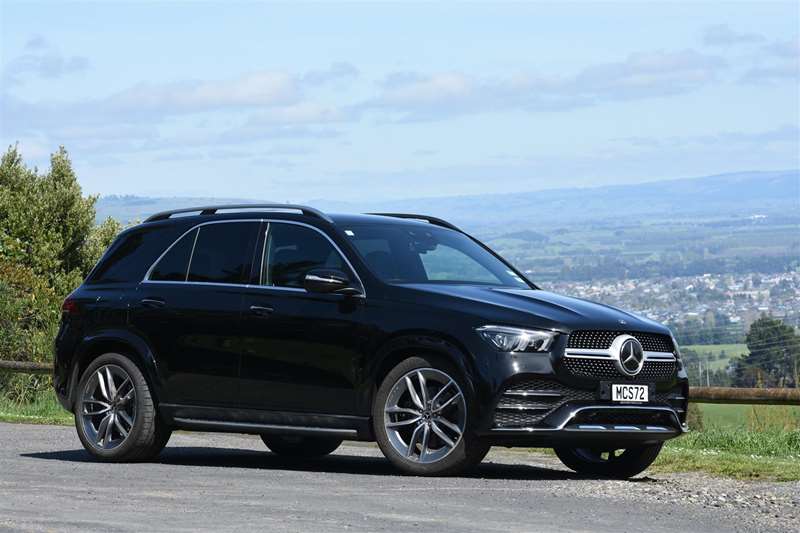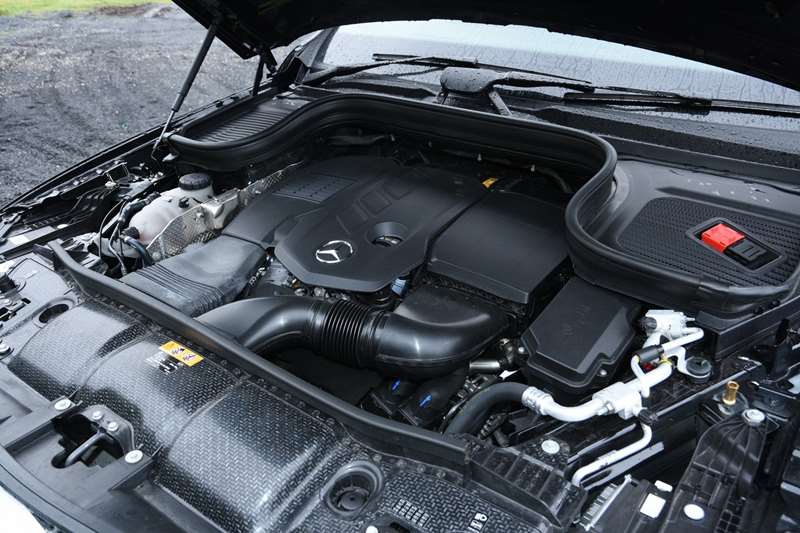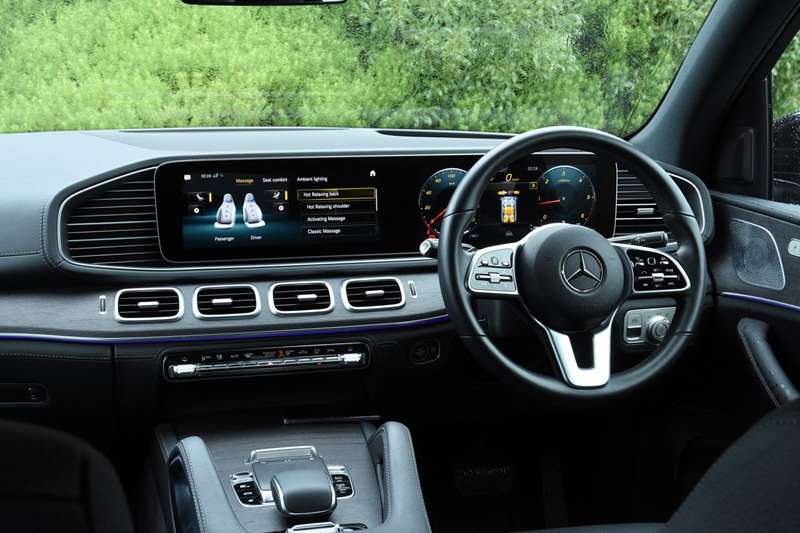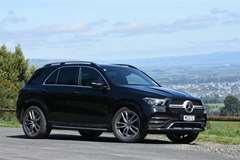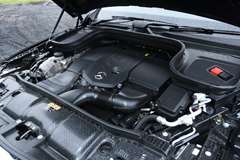Wider and longer than the already impressive model it replaces, the fourth-generation Mercedes-Benz GLE 300d is, in all ways, a step up, writes David Thomson.
What’s new?
A premium Mercedes-Benz SUV line that started with the M-Class in the late 1990s has entered its fourth generation with the appearance of the latest GLE.
The transition from M-Class to GLE took place during the life of the third-generation model, while its replacement was officially launched internationally last October.
Two GLE models are on offer for now: the 180kW/500Nm 300d (the subject of this test) and 243kW/700Nm 400d.
Compared to the previous GLE, the new model gets a substantial dimensional boost: wheelbase increases by almost 80mm to 2995mm, and there’s 120mm gain in length to 4924mm. Weight gains are kept well in check though, and thanks to a number of technology advances, the economy figures for the 300d as tested are — astonishingly — on par with that of a conventional petrol-powered compact saloon.
New technology is also apparent in other key aspects of the latest GLE, ranging from its comprehensive safety package to its double widescreen dashboard and accompanying ICT and driver command interfaces.
What comes as standard?
There’s no shortage of standard fare on the 300d: Mercedes-Benz itself lists the MBUX Infotainment system, 20-inch alloy wheels, a headup display, multibeam adaptive LED headlights and a parking package that includes a 360-degree camera as the key standard features. There’s plenty else to tick off, including artificial leather upholstery, heated and power-adjustable front seats, climate control air-conditioning, and keyless entry and starting.
The MBUX package includes the paired 12.3-inch digital instrument cluster and same-sized centre screen, navigation, a raft of safety and service functions, remote engine starting and locking/unlocking, smartphone integration, internet connectivity, and the brilliant ‘‘hi Mercedes’’ voice command system.
Standard safety equipment includes active parking assistance, adaptive braking, driver attention assistance and a driver assistance package that include adaptive radar and GPS-informed cruise control, active braking assistance (with cross-traffic function), active lane keeping and blind spot assistance, and active steering assistance.
If that’s not enough, there is an extensive menu of extras available.
On the test car, these included the AMG Sports Pack, which adds exterior and interior styling enhancements, a panorama sliding sunroof and wireless phone charging for $9900, along with the Airmatic adaptive damping and air suspension pack ($3400), tyre pressure monitoring ($850), 22-inch alloy wheels ($2000), and Obsidian Black Metallic Paint ($2100). Also provided were the $3900 seven-seat package, which provisions a power-operated third row of occasional seats, and the luxury seat package, which upgrades the front seats for an additional $3700.
What’s it like to look at?
Overtly large vehicles can attract attention for the wrong reasons these days, which is a factor Mercedes must have grappled with before it launched a new and substantially bigger GLE. A styling approach that combines traditional cues such as the backwards-angled C-pillar with soft crease lines which help to hide the vehicle’s size.
For all that, while the new GLE’s styling draws attention away from its size, it still has ample presence on the road, especially when fitted with the test car’s optional AMG sports kit and massive 22-inch alloy wheels. It is definitely a vehicle to climb into rather than simply get into, with the provision of running boards a nod to the needs of shorter people in this regard.
What’s it like inside?
With every new version , the GLE and its ML predecessor have stepped closer to a level of luxury appointment equal to that of Mercedes’ equivalent-sized saloon and wagon, the E-Class.
This time round the GLE cabin has reached par with the benchmark E-Class interior. Elegantly designed, beautifully finished and supremely comfortable, it’s hard to fault, so long as one accepts that the optional third row of seats (power operated, and offered on the GLE for the first time with this new model), are child-appropriate rather than big enough for adults.
Luggage space with the rear seats raised is 130 litres, and this increases to 630 litres when they are folded into the boot floor, and to about 2000 litres when the second-row seats are also stowed.
Thanks to large rear doors, access is easy. Adjusting for legroom as well as back angle, the second row of seats is very accommodating with substantial gains in second row legroom and headroom compared to the previous (already roomy) GLE.
The front seats on the test car were in an altogether different and even more impressive league, power adjusting every which way, and offering four different massage functions, including hot relaxing shoulder and back massages. Quite probably they warrant a full road test report in their own right, and certainly every front seat occupant over almost a week on test marvelled at the experience.
The intelligent Comand infotainment system and associated twin widescreen displays could also merit an essay in their own right. The displays are super-sharp, and customisable through numerous variations of layout and theme. Among the various options for scrolling and selecting on these screens, voice command is the easiest, but with practice the little touchpad controls on the steering wheel also work well.
The dash itself is tastefully modern and fuss free, and the quality of trim materials first-rate throughout. Cabin storage is excellent with a large centre bin, glovebox and door bins, and there are plenty of plug-in points for electronic devices, albeit with compact USB-C rather than standard USB sockets.
What’s it like to drive?
The same understated nature that defines the new GLE’s appearance spills over into the driving experience with the 300d.
Some of the context for this rests with its 2.0-litre turbo-diesel engine. Not so long ago, no premium manufacturer would have contemplated using a 2.0-litre four-cylinder engine to power a vehicle this substantial, but advances in engine and transmission technology have been game-changers.
While it neither feels lightning quick nor hugely characterful mechanically, the 300d is able to sprint from rest to 100kmh in a shade over seven seconds, while delivering a credible 6.9litres/100km standard cycle fuel consumption figure. Producing its maximum 500Nm of torque from low in the rev-range, and supported by an exceptionally smooth nine-speed automatic transmission,
the engine provides the 300d with effortless responsiveness through to the upper middle of the rev range. Beyond that, the engine runs a little short of puff, making the more powerful 400d GLE seem a better option.
The GLE’s size is evident during urban driving, especially when parking, and navigating the narrower lanes and constricted turning that represents the recent ‘‘progress’’ in Dunedin’s roading network. That said, the GLE’s high driving position gives good forward and front three-quarter visibility, and its bevy of on-board cameras and sensors make parking and slow-speed manoeuvring in tight spaces easy.
Accepting that those who wish to tow something substantial on a regular basis should look to the 400d, the 300d is an effortless, easy-going highway cruiser. Ride quality was very good in comfort mode, especially given the test car’s 22-inch alloys and massive and fairly low-profile tyres. Those tyres generated some road rumble on coarse-chip surfaces, but on the whole, noise levels were impressively low within the cabin.
With the adaptive damping option pack also fitted, it was possible to firm up the ride quality (as well as sharpen engine and steering response) at the push off a button. Even in this more aggressive dynamic mode, which was my preference while on the twistier sections of our main highways, the test car continued to ride well, while cornering in a flatter and more composed manner.
The GLE 300d was also pleasantly surefooted down narrow winding tarmac roads, although it is not in any sense a sports car.
This test coincided with an extended period of very wet spring weather, and so conditions were too damp to venture fully off the beaten track, despite the GLE having special drive modes for such adventuring.
Verdict
This new GLE is, in all ways, a step up from a predecessor that was, in its own right, a highly capable large premium sports utility. While it will appeal particularly, in 300d form, to those who value sumptuous comfort and the latest in-car infotainment ahead of sporting prowess, it should also prove a brilliant vehicle for long-distance open road motoring.
Photos: David Thomson
